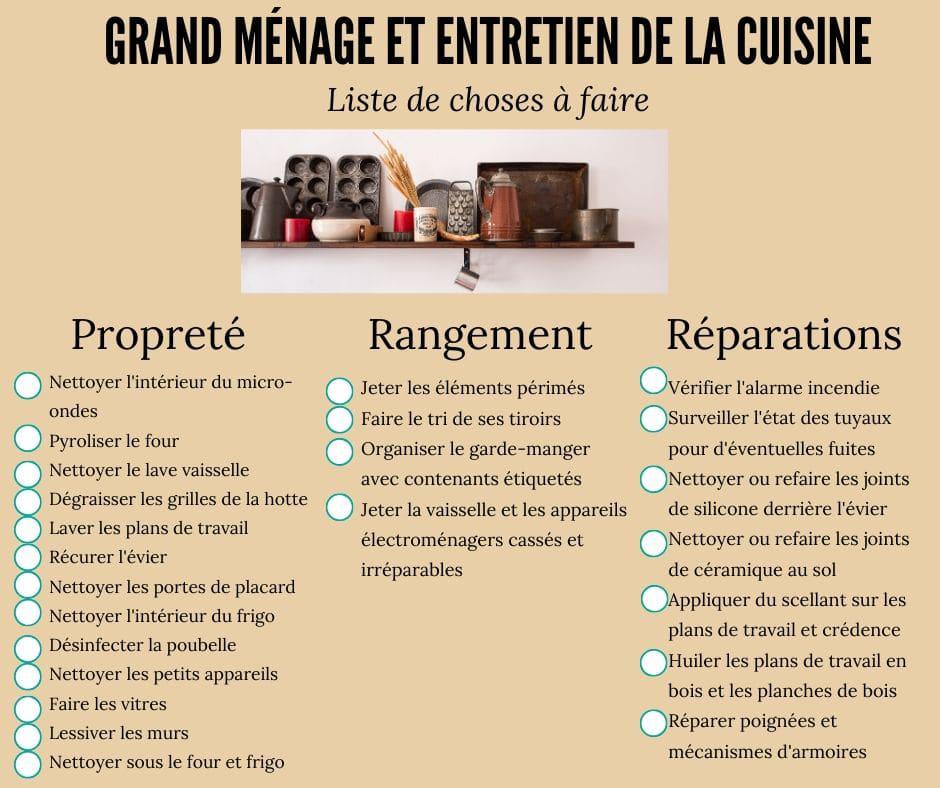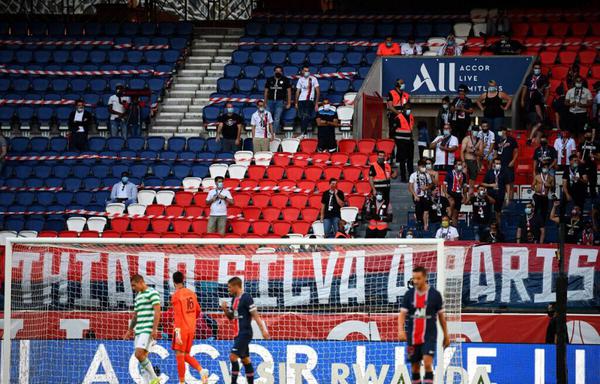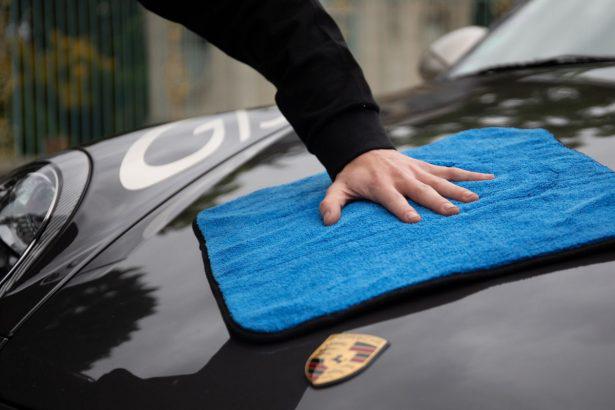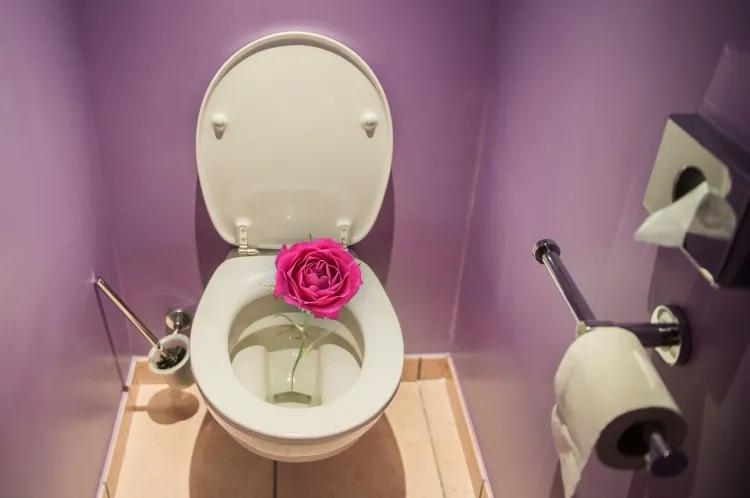Are playgrounds starting to change? For several months, this square of asphalt that seemed immutable has (finally?) been attracting attention. Municipalities such as Bordeaux, Lyon, Lille, Paris, Grenoble or Rennes communicate on their desire to offer schoolchildren greener, more mixed and less “gendered” courses. "It is above all the view of adults that is changing on this subject", observes Julie Delalande, an anthropologist who has been studying this hitherto largely ignored space for twenty years.
→ READ. At the “recess” school
The researcher links this renewed attention to "two elements external to the life of the courtyard itself": climate change, which reveals the furnace effect of tarmacked spaces, and the first confinement, which suddenly increased interest in outdoor activities. And the kids in there? They rather live this daily space in “continuity” with games, codes and tacit rules which “are transmitted between peers, from generation to generation”, and constitute what Julie Delalande identifies as a “children's culture”. To which, according to her, adults should pay more attention to help her flourish.
This is where, sometimes, the shoe pinches. The “legalization” of society and the fantasy of zero risk have dried up recess. Marbles, skipping ropes and even balloons are sometimes prohibited because they are considered dangerous or cause conflict. We don't go out when it's raining, because it's wet, or when it's snowing, because it's slippery... And, to complicate everything, the rules vary according to the establishments, the periods and the interlocutors. “With the mistress, we have the right to climb trees, but not with the animators”, remarks Gabin. "It's because they don't have the same contract", thinks a big CM2.
“The institution is much more interested in academic success than in what happens in the yard. »
Julie Delalande, anthropologist
Good year, bad year, the students adapt, as they did in the face of the health protocol imposed by the pandemic. Joachim, 7, now plays “Covid” with his friends: “You have to avoid getting hit by the virus, and free those who are in the hospital. “Perplexed by the changing instructions on the toys allowed in her school, Lina puts it into perspective: “It's fine, we manage, we play games without toys. And then we sit on the floor, against the fence, and we invent stories. I am imagining a board game. »
Nevertheless. If the creativity of children knows how to grow above ground, it also feeds on material elements, if only leaves and twigs to create a miniature village. Greening a yard can be expensive, but some initiatives are more accessible: taking the books out of the CDI on sunny days, replacing the balls with foam balls, allowing frisbees, hoops and board games, hosting a vegetable garden or chicken coop... projects that sometimes rest just on the shoulders of a few determined adults.
→ INVESTIGATION. "School of the base", breaking down the walls between primary and secondary school
In principle, everyone wants the students to feel good in their playground, and that everyone finds their place there. But are we willing to let the little ones dig and climb, because it amuses them? Or teenagers to hide from view, if they need to? “Teachers and school management are constrained by very strong standards, and confronted with worried parents, recalls Julie Delalande. Yet the relationship to risk is learned, like the rest! But the institution is much more interested in academic success than what happens in the yard. »
She analyzes: “We prefer not to take any risks, and so much the worse for awakening, pedagogy… What are our institutional choices? Should we choose the easy way? Is the institution ready to cover teachers against the risk, because it can be beneficial? In the mini-society that constitutes their backyard, some establishments dare to innovate and grope their way to try to invent other recreations. Inventive, diverse and scattered initiatives, which would benefit from spreading.
A more playful courtyard
The courtyard of Notre-Dame-de-la-Croix school, near Vannes, offers a very curious sight. On the paved rectangle enclosed by a pretty stone wall, children chase each other perched on pushchairs, while others confront each other armed with pool noodles. Further on, in a corner, a girl is tapping away on a laptop keyboard, while a group is rearranging the slide with old curtains and construction cones. Émilie Soulabaille crosses this strange playground looking perfectly serene. It was she who, in 2017, heckled the recreations of the private school of Monterblanc, in Morbihan, by discovering on the Internet the concept of "playing boxes". She has been the director of this nursery and elementary school for three years, and is looking for ideas to pacify the recess.
→ LONG FORMAT. School principal, mission impossible?
"When I discovered the Jouer pour vivre association, which installs boxes full of games in schools, I said to myself, 'That's great, I want that!' As soon as said, (almost) as soon as done. The enthusiastic director shares her discovery with the network of neighboring schools, and seduces her colleague from La Vraie-Croix, a few kilometers away. In 2018, the staff of the two schools received training and benefited from advice adapted to the configuration and needs of each establishment from the association. In 2019, the first boxes to play arrive. “We saw the effects very quickly, with fewer incidents and accidents in the yard,” recalls Émilie Soulabaille.
The English concept is mainly declined by the association Jouer pour vivre in narrow Parisian courtyards. The play boxes open there like treasure chests, increasing the space with an increase in imagination. At Notre-Dame-de-la-Croix, space is not lacking. More, anyway. Until the summer of 2020, the 260 students shared the "front yard". Since September, the playing space has gained 1,500 square meters at the back of the building. If the new green ground has reduced promiscuity and jostling, the new approach to the game brings a revolutionary touch.
“We saw the effects very quickly, with fewer incidents and accidents in the yard. »
Émilie Soulabaille, director of the Notre-Dame-de-la-Croix kindergarten
Adults strolling through this extraordinary courtyard constantly oscillate between peaks of stress and moments of wonder. We smile to see a little girl busy with the endless task of sweeping the earthy floor, or a boy trying to tame a walker. We worry about these two children who play at swinging in old car seats (“Are they not going to fall? Oh no.”).
At Notre-Dame-de-la-Croix, the play boxes contain recycled objects, and everyone got into the game. Parents and grandparents donated their old frying pans and saucepans, and fabricated a wooden pallet kitchen for the yard. Cathy, Asem (understand “specialized nursery school agent”) and “queen of the waste disposal centre”, has found a fridge to complete the equipment. A father's employer donated a pipe for the water networks under the roads, which has become a tunnel for the children to explore.
With all this material at hand, students can invent endlessly. “Before, there were more conflicts, because more boredom. There, with the multitude of possible occupations, everyone is on their own,” notes Vanessa Bouchard, director of the Catholic school of La Vraie-Croix.
On this summer day, a group of children are busy in the dirt, under a staircase. Armed with sticks and spoons, they scratch frantically. “By dint of digging, they found bones! exclaims a host, torn between concern and admiration. In the story that the apprentice paleontologists are building, the bones (of a cat? of a chicken?) are necessarily those of a dinosaur, and they dig deeper. "Hey guys, if you dig hard enough, you'll find the sea!" says a mockingbird seated further away. He applies himself to sifting earth with the filter of an antique coffee machine. “Look, touch! We make a very soft powder. »
“If the children are dirty, it proves that they have played well! »
Annie Fréhel, teacher in CP-CE1
But how to be bored, indeed? You just have to deal with a huge cloud of dust. “Safety and cleanliness are important aspects of the project, points out Annie Fréhel, teacher in CP-CE1. But if the children are dirty, it proves that they played well! “After initial reluctance quickly swept away, the parents prefer, after reflection, that the children get dirty in the ground rather than going around in circles on the asphalt. Émilie Soulabaille notes that this approach to the game “breaks the representation that you have to be clean and well dressed for school. Children come here to play, learn and experience.”
In terms of experiences, in fact, we are not left out. Here, children have the right to climb trees, climb the gates, ride down the lawn on their bikes. “We observe them, and we start from their needs to think about the layout, explains Émilie Soulabaille. For example, we saw that they wanted to climb the barriers. Rather than forbidding them, we put gravel on the ground to cushion any falls. The director ensures that prohibitions attract and encourage excessive risk-taking. Prohibitions, there are all the same: not to hurt, not to leave the establishment… But they are weighed. “We monitor the students by systematically evaluating the risk-benefit ratio. If the adult feels a fear, is it justified? Should we, in a given situation, prohibit, adjust, let things happen? »
→ MAINTENANCE. “The inclusive school requires a profound change of culture”
The expansion of the courtyard and the use of salvaged objects have transformed surveillance. All teachers are now called upon for each recess, which has aroused some resistance. “But the surveillance atmosphere has changed, assures Émilie Soulabaille. The students are less in conflict and more autonomous, it is less tiring. Teacher Annie Fréhel confirms: “Before, we spent recess resolving conflicts. There, the children invent, divert objects... And in class, we feel that they have had their quota of freedom and physical exercise. »
Today, the quirky games of the Monterblanc school no longer frighten anyone, on the contrary. Some families even choose this establishment so that their children have fun with walkers, and climb trees without hindrance. However, Émilie Soulabaille remembers having “not always slept well at the beginning. I said to myself: “But what are we getting into?” She took the risk.
A more natural courtyard
The courtyard of the school complex of Nontron, in the Périgord, looks like a holiday: clusters of teenagers are chatting on picnic tables under the trees, a couple of lovers kiss in the grass, high school students play volleyball to the rhythm of music coming from a mobile phone... The Alcide-Dusolier establishment enjoys a beautiful space: two hectares, one of which is green spaces. “It has not always been seen as an advantage, notes Erwan Sellin, professor of SVT (life and Earth sciences). Before, this courtyard was mainly perceived as a difficult place to monitor. »
When this teacher arrived from the Paris region in 2008, “this courtyard looked like an empty park”. The students disdained the lawn, massed on a tarmac ground conducive to jostling. Very involved in the promotion of biodiversity, Erwan Sellin has gradually taken over the vast green spaces of the establishment. Which is today, with the “City of biodiversity” project, at the forefront of respecting and welcoming nature.
→ LARGE FORMAT. The AESH, these "invisible" who open the school to children with disabilities
The approximately 800 students educated here now live alongside some twenty nesting boxes (for sparrows, owls or bats), nests for solitary bees, a hedgehog shelter, a pond... Some fifty students are eco-delegates, very committed to the "City of Biodiversity", but not all middle and high school students are equally sensitive to the fate of earwigs or xylophages. They still appreciate the logs to sit in the shade, the pretty flowers, the pleasure of sitting in the grass... "In addition, if you fall, you hurt yourself less," says Hadrien .
Everyone tastes 100% homemade and organic cuisine in the canteen, where waste has been sorted for years. “Students can stay here for seven years,” observes principal Élise Coulon-Colombeau. The establishment project creates an acculturation to the challenges of sustainable development, even if it is necessary for some to leave their comfort zone. On taste education, for example. Seasonal vegetables and chickpea meringues are not unanimous, but the chef, who picks his herbs from the courtyard vegetable garden, intends to soon offer cooking workshops to students.
“Gradually, we are doing more and more things for nature”
Théo, first year student at the Nontron school complex
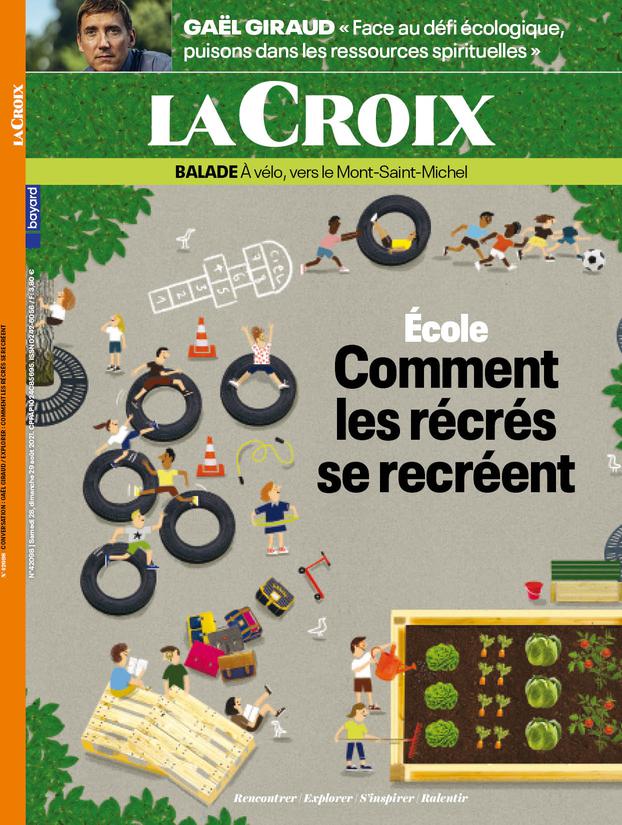
The eco-delegates are having a blast. In a room that looks like Ali Baba's cave, they have access to all the equipment for digging, cutting, painting, watering... Nesting boxes, feeders and other insect hotels are put together "between friends, during recess or free time" , details Theo, in first. For major works, “eco-citizen days” invite families to join in the effort. “We then see parents who never come to parent-teacher meetings,” remarks Erwan Sellin. We work together, all in overalls, it creates different relationships. »
In the many green corners of the school complex, students discover participatory science (by listing butterflies, earthworms, etc.), nature photography, botany, permaculture, life that flourishes in a pond or a wasteland… So many discoveries that they then apply at home, or project in their choice of orientation. “Gradually, we are doing more and more things for nature,” remarks Théo. It almost becomes a way of life. »
A more mixed courtyard
Under a blazing sun in a deserted courtyard, Édith Maruéjouls and Célia Ferrer transport large rectangles of wood, stack them, question themselves, and move them again. This mysterious occupation is part of their mission to rethink the courtyard of the Voltaire college in Colomiers, near Toulouse. Édith Maruéjouls is a geographer specializing in gender issues, Célia Ferrer social designer and, for now, they are waiting for recess.
College students coming out of class are like cats: intrigued by these new facilities, they approach them, turn around, climb on them... The speakers don't miss a beat. "Look, the girls are settling in the center, it's interesting... We'll see if they stay until the end. They notice the little schoolboy pulling a pallet aside, in the shade of a building. “He creates his little corner. It is important that the students can be alone if they wish. »
→ MAINTENANCE. “Restoring women their place in space is restoring their confidence”
These ephemeral installations make it possible to experiment with development possibilities. “We propose, to see how they have it,” comments Édith Maruéjouls. This step comes after several exchanges with college students who have drawn their courtyards, traced their movements, imagined names for the different spaces, and discussed together equality, diversity, the right to be different...
Initiated by the departmental council of Haute-Garonne, the approach convinced the new management team of the college as well as Catherine Cadilhac, principal education adviser: "The school plays on the school climate, and this school is sad" , she judges. Fights, once a daily occurrence, have diminished, but “the yard is only used to vent some boys. The others stagnate or march.
“Courtyard is only for venting some boys. The others stagnate or march. »
Catherine Cadilhac, Senior Education Advisor at Voltaire College
The question of the occupation of space by boys and the omnipresence of football is recurrent in playgrounds. In general, the footballers are in the center, and all the others are content with the periphery, praying not to take a penalty in the nose. The Voltaire college in Colomiers is no exception. "As soon as we pass, they tell us to get out," sighs Max, a little sixth-grade guy. “In addition, as they have no land, they play everywhere! “, annoys Célian, in third. No line on the ground delimits the parties.
The inescapable football is not a subject of boys, but of some boys. “And here, if we don't play football, we don't do anything! Octave slice. While we could play badminton, pétanque…” The integration of a collective playground is one of the options imagined by Édith Maruéjouls. Regularly associated with the design of “genderless courses”, she prefers to speak of “egalitarian courses”. “I want to imagine places where we learn to live together, in the playground as well as in the public space. Learn to share space between boys and girls, young and old…”
→ REPORT. The Caminando school, in the Drôme: when nature fosters a taste for learning
The geographer is planning a “variety of proposals” for this courtyard, with “spaces to exercise, and others to rest”. The garden, currently locked, could be opened and dedicated to rest, to board games... And since the CDI is on the ground floor, why not open it onto the courtyard, in order to give it a place readers and culture? Ditto for the music rooms, "confidentialized" when they could bring another color to the recess.
Sinclair, very motivated by this reflection on the redevelopment of the courtyard, regrets not being able to take advantage of it, since he is about to enter high school. But little Max, eccentric on a patch of dry grass with his girlfriend Kayla, may have the chance to revise his judgment on his first year of college: “We are a little bored, he confides. In fact, I miss elementary school hoops and skipping ropes. »
A cooler courtyard
The surroundings of the Maryse-Hilsz school, in the 20tharrondissement of Paris, do not exactly evoke coolness. If the Bois de Vincennes is not far, it is especially the ring road which is close, and the establishment is squeezed between this roaring artery and the blocks of buildings which run along the boulevards of the marshals. Exactly. This is the kind of place that needs an oasis, and the Paris City Hall has selected this school group to benefit from the most advanced level of its Oasis courses, supported by European funds.
The primary objective of the Oasis project, launched in 2017 by the City, is part of the capital's adaptation strategy to global warming. Schoolyards have been identified as a lever to combat the “urban heat island” effect, which maintains high daytime and nighttime temperatures in cities. "There are sometimes differences of ten degrees between Paris and the suburbs," says Raphaëlle Thiollier, Cour Oasis project manager.
→ INVESTIGATION. Montessori pedagogy, promise or business?
The new space at Maryse-Hilsz Elementary School offers a perfect before/after comparison. The Oasis courtyard adjoins that of a college which has not been renovated. On the elementary side, it's like being in a park, with trees, dirt roads, mounds... On the college side, it looks like a parking lot: a vast square of asphalt whose lines draw sports fields rather than parking lots. This asphalt floor that covers so many playgrounds is particularly targeted by the Oasis team, because it absorbs heat during the day and releases it at night, aggravating the effects of heat waves. While the world is experiencing temperature rises due to climate change, this "albedo effect" affects local residents, but also students, now that heat waves occur from June.
“You never get bored. »
The transformation of a classic courtyard into an Oasis involves changing the ground, thinning it out to store less heat. The project also relies on plant freshness, through shade and evapotranspiration which transfers the humidity of the plants to the atmosphere. Work is being carried out on the recovery of rainwater used for fountains, misters, educational rivers… “At the beginning, we relied mainly on technical solutions, recalls Raphaëlle Thiollier. But the ground remained flat and abrasive. A study trip to Belgium, in the fall of 2019, helped to develop the project towards more plant-based, more playful lessons... "We're on the move", sums up the project manager.
The Parisian Oasis courses are all different, because they were designed in collaboration with the students and adults of each establishment, then adapted to technical and budgetary realities. Children, some of whom dream of swimming pools and climbing walls, are sometimes a bit disappointed. But the newest children give pride of place to play, and that of the Maryse-Hilsz school has an imposing earthen mound embellished with a wooden bridge, a watchtower and a wide slide. Below is a sandbox and, a few steps away, paths that wind towards a village of wicker huts.
→ INVESTIGATION. Physical education or sport, the school dilemma
The big yard is no longer separated from the small one by a gate, as before, but by a small river punctuated with locks. If they recognize “playing with water” when it is hot, the students are especially marked by the playful dimension of their new playground. “Before, there was nothing. Now it's too good, "summarizes a busy little girl in the sand. “We never get bored”, completes a brunette who emulsifies a soup with the earth for her “restaurant”. It must be said that the students of the Maryse-Hilsz school undoubtedly benefit today from the pinnacle of the playground, since that of the college next door, deserted, is temporarily accessible to them. "Here, it's better to hide, and over there to play basketball", sums up the little cook. Like what, designing the perfect yard is child's play!
A quieter courtyard
In the heart of Saint-Jean-de-Luz, a few steps from the beach, the Sainte-Marie college has a narrow courtyard behind high walls. 430 students aged 11 to 16 meet on this asphalt rectangle. But some of them are particularly responsible for watching over others. They are student mediators, tasked with identifying the conflicts that often arise in court, and helping to resolve them.
→ REPORT. La Grange-aux-Belles, a soft green college
The idea came from the parents’ association. She received a positive reception. Teachers and parents were trained in mediation, then they trained the students, according to the approach of the Médiacteurs association, launched in 1993 by teachers Babeth Diaz and Brigitte Liatard.
The Collège Sainte-Marie has gone so far as to integrate mediation into the timetable. From the fifth, all the students of this establishment discover the principle and then the techniques of mediation between peers. And third, volunteers can become mediators. “We have more candidates than conflicts to settle, and that’s good! smiles Maider Landes, pastoral animator and responsible for mediation. But the training is enriching in itself because the subject is life! “, she summarizes.
“The training is enriching in itself because the subject is life! »
Maider Landes, pastoral animator and head of mediation at Sainte-Marie College
The course, first mixed with pastoral care, addresses self-knowledge, tolerance, the gaze of others, the difference between facts and judgments... before detailing the principles and techniques of mediation between peers such as they are defined by the Médiacteurs association. In terms of principles, mediation is based on volunteering, confidentiality, non-judgment, impartiality. On the technical side, it takes place between students, without adults, and the mediators (in conflict) each present their feelings, needs and proposed solutions, when the mediators promote a meeting and peaceful dialogue. Easy ? Not necessarily !
→ TESTIMONIALS. “I was bullied at school; the library was a place where I was safe”
Although the students regularly practice simulations based on conflicts imagined by Maider, the practice sometimes turns out to be complex. Ana, face of a bird and rings on all her fingers, remembers her last experience as a mediator, in tandem with Gabrielle: “Two girls approached us because one had made racist remarks. They each came accompanied by their group of friends. We struggled! It took an hour of discussion for an apology to arrive… which was refused. Gabrielle completes: “Besides, the parents got involved! As we couldn't get out of it, we called the director. But most often, conflicts are settled between us, and in half an hour. »
Mediation takes place between young people, but referent adults remain available to advise and relay them. “And the mediators do not intervene in heavy subjects, such as harassment, racketeering, scarification… They know that, in these situations, it is necessary to appeal directly to adults”, still points out Maider Landes.
“I want to help as I have been helped. »
Matis, mediator at Sainte-Marie College
The eye of the mediators remains invaluable for spotting, if only initially, discomfort that often escapes the gaze of supervisors, especially in middle school. In pairs and in rotation over the week, the mediators open their eyes and ears wide, and roam the courtyard, watching over the nooks conducive to settling scores or isolation – “the toilets, the stairs, behind the elevator”… – “We don’t force anything,” says Salomé. But we offer. “You have to know how to accept help to move forward,” said Matis, who resorted to mediation after a fight in fourth grade. “The mediators did a good job. This is what motivated me to become a mediator this year. I want to help as I was helped. »
→ MAINTENANCE. “Advise your child not to be left alone”
There is no shortage of confusion in the playground: rumours, criticism, jealousy, love affairs, or simply a sidelong glance. “Sometimes we are asked for mediation for almost nothing, just a misunderstanding,” Jade wonders. The meeting does not have the magic effect of a love potion. After mediation for recurring conflicts with another student, a tall redhead finds that they still argue sometimes, "but with more respect". Clara, mired in a rivalry with another girl, weighs the impact of mediating between them: “She still doesn’t like me, but hey… At least she doesn’t bother me anymore. "The solution is sometimes to take a little distance in the relationship," slips Maider.
The role of mediator transforms those who take it on. “I hesitated to become one, admits Matis, because then I could no longer fight. Finally, he opted for mediation. It is the students themselves who give themselves this duty to set an example, a question of credibility. “Since I have been a mediator, I tell myself that I can no longer get angry for trifles when I know how to solve them,” says Salomé. Ana, she feels “more mature”: “When I find myself in conflicts, I try to discuss, to apply what I have learned. » Mediation training is not part of school curricula. Too bad, because we can see to what extent, in the words of Maider Landes, "it will be useful to students all their lives"... as long as there are conflicts!
On the same topicNotes at school, should we change everything?You must be logged in to post a comment
Already inscribed on the Cross?
SIGN INNot yet
subscribed?


